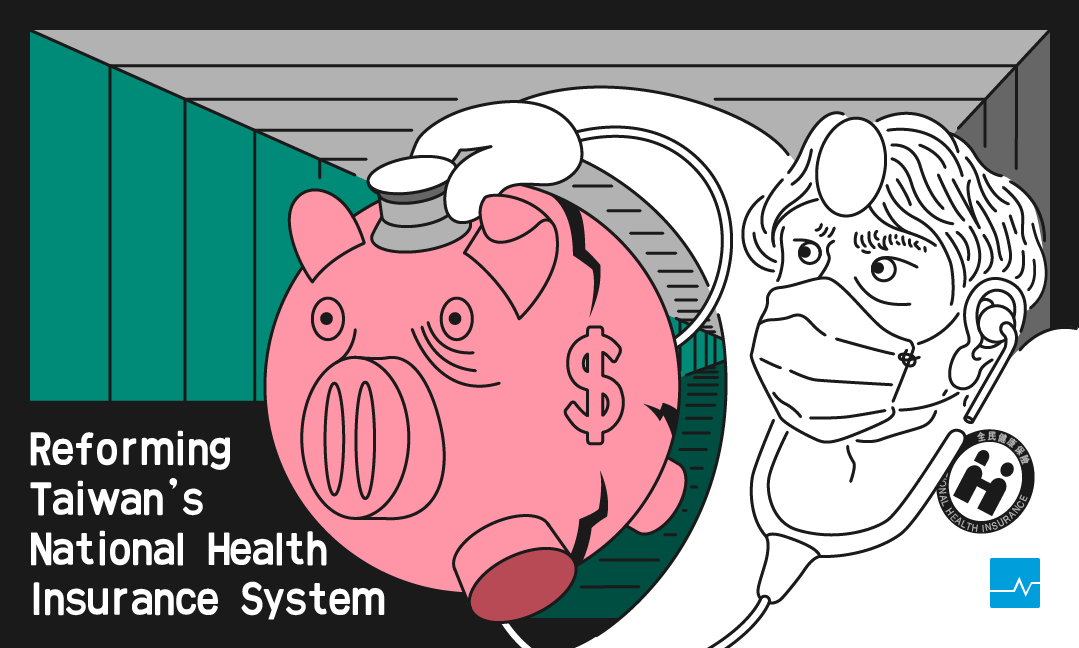Reforming Taiwan’s National Health Insurance: Bundled Payments Model
What you need to know
Taiwan has nearly two decades of successful experience with bundled payment programs. Expanding these programs is a priority for the country.
This is the second part of a series on reforming Taiwan’s National Health Insurance system.
The majority of Taiwan’s healthcare reimbursements are economically irrational. To illustrate this point, imagine a patient undergoes a seemingly successful hip-replacement surgery. Soon after, the patient starts to develop unexplained pain, and it is found that the surgeons left gauze pads in the surgical site. The patient has to undergo another round of surgery and stays at the hospital to recover.
In the current fee-for-service reimbursement model, NHI pays for the initial surgery and the second surgery to remove the gauze pads. It also pays for all the additional days spent in the hospital. This means the hospital will actually receive more money for a patient with postsurgical complications.
The National Health Insurance Administration (NHIA) controls how healthcare is reimbursed and determines the costs of doctor visits, drug prescriptions, and procedures.
NHIA’s considerable control over healthcare funds means it can use the reimbursement regulations to implement healthcare reform.
Taiwan has some experience in healthcare reimbursement reform. In 2001, the country became one of the first to offer national bundled payment models for a variety of conditions including tuberculosis, asthma, diabetes, cervical cancer, and breast cancer. Bundled payments involve a fixed sum of money to cover a patient’s full cycle of care in a coordinated and efficient manner that is of high quality and low cost.
For example, in the breast cancer program, providers receive a fixed payment per patient depending on his or her disease severity and expected courses of treatment. This payment model adjusts for risk, and providers are rewarded for taking on a difficult case. Bonus payments are based on year-end survival and disease-free survival rates.
A follow-up study in 2017 found that compared with traditional fee-for-service programs, providers using bundled payments for breast cancer saw “better adherence to quality indicators, better outcomes, and more effective cost control over time.”
There are numerous advantages to bundled payments. The first is reduced costs. This reimbursement model requires providers to understand the costs of providing care, because it has already factored into the time and salary of each individual involved in the patient’s care, as well as every test, drug, and equipment used. Time spent in the hospital for recovery and the follow-up visits after discharge are also calculated. If providers decide to use ineffective treatments or order unnecessary tests, they have to bear the cost of overtreatment. If preventable complications occur, they’re also responsible for the costs.
Under bundled payments, NHIA will know exactly how much they will spend on each patient. On the contrary, the current fee-for-service payment model leaves the NHIA blindsided on how much medical care costs until after the patient receives all services and leaves the hospital. With bundled payment, NHIA knows how much is budgeted and can better prioritize how its resources might be used year after year.
The second advantage is that providers are now accountable for the patient’s health outcomes. If providers assume financial risk for treating patients, they must make efforts to decrease medical errors, reduce hospital readmission rates, and lower hospital-acquired infections.
Third, the bundled payments model will create competition among providers to deliver high-quality care at lower cost. Underperforming providers will cede their market share of patients to hospitals and clinics who can provide effective and efficient care. There are ample evidence and success from the United States, Canada, the United Kingdom, Denmark, and the Netherlands that can serve as a blueprint for bundled payments in cardiovascular procedures, orthopedic procedures, and diabetes.
While bundled payment has been successfully tested in Taiwan, this initiative did not come without costs. Developing new care management infrastructures within each hospital is expensive. Clinicians need additional training and support for performance improvement, while technology needs to be enhanced so both NHIA and providers can share performance data under value-based contracts.
Each hospital requires data analysis teams to understand how to look for savings without hurting patient outcomes. Physicians need actionable data on a regular basis to benchmark how they rank in quality measures against other providers and see where their greatest opportunities for improvement might be. IT systems can help clinicians follow evidence-based clinical pathways to better care for patients. Even with these initial costs, studies show bundled payments can reduce long-term costs to the overall healthcare system.
Ultimately, bundled payment aligns the goals and objectives of both the NHIA and providers. Taiwan has nearly two decades of successful experience with these pilot bundled payment programs. Expanding these programs to include diabetes, hip and knee replacement surgery, congestive heart failure, and additional cancers is a priority for the country.
It is time to move out of the pilot stage and begin implementing this value-based model on many more medical conditions and procedures.
Source: The News Lens By: Daphne K. Lee, Nicholas Haggerty (@thenewslensintl)
Support families fighting financial toxicity of cancer – here.
